




Your support is critical to our success.
Cact. Succ. J. (Los Angeles) 60: 26. 1988
Family: CACTACEAE
Accepted Scientific Name: Echinocereus coccineus Engelm. in Wisliz.
Mem. Tour N. Mexico [Wislizenus] 93, adnot. 1848 [Apr 1848] Wisliz., Wisliz., Wisliz.
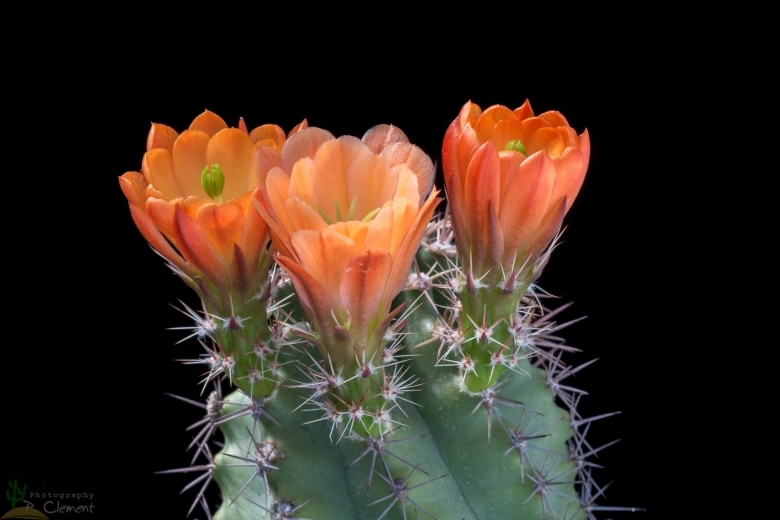
Echinocereus coccineus var. gurneyi HK 1064 (Collector Horst Kuenzler) Locality: Brewster County, Texas, USA.
Origin and Habitat: Southwestern USA (New Mexico, Trans-Pecos Texas), Mexico (Chihuahua)
Altitude: 1200-1500 metres above sea level.
Habitat: It grows on rocky hillsides, on exposed slabs and fractured limestone rock in pine-oak-juniper woodlands and often associated with Dasylirion leiophyllum, Escobaria guadalupensis, Echinocercus viridiflorus var. cylindricus, and Agave neomexicanaSN|1675]]SN|1675]].
Synonyms:
- Echinocereus coccineus var. gurneyi (L.D.Benson) S.Brack & K.D.Heil
- Echinocereus triglochidiatus var. gurneyi L.D.Benson
Echinocereus coccineus Engelm. in Wisliz.
Mem. Tour N. Mexico [Wislizenus] 93, adnot. 1848 [Apr 1848]
Synonymy: 46
- Echinocereus coccineus Engelm. in Wisliz.
- Cereus coccineus (Engelm.) Engelm.
- Echinocereus triglochidiatus var. coccineus (Engelm.) W.T.Marshall & T.M.Bock
- Echinocereus arizonicus subs. matudae (Bravo) Rutow
- Echinocereus matudae Bravo
- Echinocereus arizonicus subs. nigrihorridispinus W.Blum & Rutow in W.Blum et al.
- Echinocereus canyonensis Clover & Jotter
- Echinocereus coccineus subs. aggregatus (Engelm. ex S.Watson) W.Blum, Mich.Lange & Rutow
- Cereus aggregatus (Engelm. ex Emory) J.M.Coult.
- Coryphantha aggregata (Engelm. ex Emory) Britton & Rose
- Coryphantha neovivipara var. aggregata (Engelm. ex Emory) Y.Itô
- Coryphantha vivipara var. aggregata (Engelm. ex Emory) W.T.Marshall
- Echinocereus aggregatus (Engelm. ex Emory) Rydb.
- Escobaria aggregata (Engelm. ex Emory) Buxb.
- Mammillaria aggregata Engelm. in Emory
- Mammillaria vivipara var. aggregata (Engelm. ex Emory) L.D.Benson
- Echinocereus coccineus var. arizonicus (Rose ex Orcutt) D.J.Ferguson
- Echinocereus arizonicus Rose in Orcutt ex Orcutt
- Echinocereus triglochidiatus var. arizonicus (Rose ex Orcutt) L.D.Benson in L.D.Benson
- Echinocereus coccineus var. gurneyi (L.D.Benson) S.Brack & K.D.Heil
- Echinocereus triglochidiatus var. gurneyi L.D.Benson
- Echinocereus coccineus var. kunzei (Gürke) Backeb.
- Echinocereus kunzei Gürke
- Echinocereus coccineus var. rosei (Wooton & Standl.) A.D.Zimmerman
- Echinocereus rosei Wooton & Standl.
- Echinocereus triglochidiatus var. rosei (Wooton & Standl.) W.T.Marshall
- Echinocereus decumbens Clover & Jotter
- Echinocereus engelmannii subs. decumbens (Clover & Jotter) W.Blum & Mich.Lange in W.Blum et al.
- Echinocereus engelmannii var. decumbens (Clover & Jotter) L.D.Benson
- Echinocereus hexaedrus (Engelm.) Rümpler
- Cereus hexaedrus Engelm. & J.M.Bigelow
- Echinocereus paucispinus var. hexaedrus (Engelm. & J.M.Bigelow) K.Schum.
- Echinocereus triglochidiatus var. hexaedrus (Engelm.) Boissev. in Boissev. & C.Davidson
- Echinocereus krausei De Smet. in Förster
- Echinocereus neomexicanus Standl.
- Cereus neomexicanus (Standl.) Tidestr. in Tidestr. & Kittell
- Echinocereus triglochidiatus var. neomexicanus (Standl.) W.T.Marshall
- Echinocereus phoeniceus (Engelm.) Rümpler
- Cereus phoeniceus Engelm.
- Echinocereus phoeniceus var. albispinus Rümpler in Förster
- Echinocereus phoeniceus var. longispinus Rümpler in Förster
- Echinocereus phoeniceus var. rufispinus Rümpler in Förster
- Echinocereus roemeri Engelm. ex F.Haage
- Cereus roemeri Engelm.
- Echinocereus toroweapensis (P.C.Fisch.) H.Fürsch
Echinocereus coccineus subs. paucispinus (Engelm.) W.Blum, Mich.Lange & Rutow in W.Blum et al.
Echinocereus Monogr. (preprint) [4] (1998)
Synonymy: 5
- Echinocereus coccineus subs. paucispinus (Engelm.) W.Blum, Mich.Lange & Rutow in W.Blum et al.
- Cereus paucispinus Engelm.
- Echinocereus coccineus var. paucispinus (Engelm.) D.J.Ferguson
- Echinocereus paucispinus (Engelm.) Rümpler
- Echinocereus triglochidiatus var. paucispinus (Engelm.) W.T.Marshall & T.M.Bock
ENGLISH: Texas claret-cup
Description: Echinocereus coccineus var. gurneyi is a nice cactus species characterized by short spines and orange-red flowers. It is a variety of doubtful validity, generally included in Echinocereus coccineusSN|7140]]SN|7140]]. However, some authors, consider this plant the result of introgression of Echinocereus dasyacanthusSN|5533]]SN|5533]] into Echinocereus coccineusSN|7140]]SN|7140]] (a naturally occurring hybrid) as suggested by relatively subtle features, such as orange instead of red flowers, higher rib number, and shorter spines and is often treated under ICBN rules as a synonym of the nothotaxon Echinocereus x roetteri.
Habit: It is a low growing cactus species, usually clumping often in colonies of 10 stems or more.
Stem: 20-35 cm long, 5-10 cm in diameter, darker green in color compared to the other varieties.
Ribs: (8-)10 -11(-12), not markedly tuberculate.
Spines: Mostly undifferentiated between radials and centrals.
Central spines: 1 (occasionally 2), up to 7,5 cm long and 0,5 mm in diameter.
Radial spines: 5-12.
Flowers: Paler than the type, orange-red or salmon pink, up to 8 cm in diameter.
Blooming season: April-May, open day and night. Fruiting 2-3 months after flowering.
Subspecies, varieties, forms and cultivars of plants belonging to the Echinocereus coccineus group
 Echinocereus arizonicus subs. matudae (Bravo) Rutow: has larger stem, up to 50 cm tall, and 12 cm in diameter, a reduced number of ribs with fewer short, thick spines. Distribution: Mexico, Chihuahua.
Echinocereus arizonicus subs. matudae (Bravo) Rutow: has larger stem, up to 50 cm tall, and 12 cm in diameter, a reduced number of ribs with fewer short, thick spines. Distribution: Mexico, Chihuahua. Echinocereus coccineus Engelm. in Wisliz.: It has stems that are 2,5 to 5 cm thick, with 8 to 11 ribs. The spines are not differentiable between centrals & radials. There are 0 to 4 central spines and 5 to 20 radial spines per areole. The red-orange flower is 7-8 cm across, and the stigma has 7 or 8 lobes.
Echinocereus coccineus Engelm. in Wisliz.: It has stems that are 2,5 to 5 cm thick, with 8 to 11 ribs. The spines are not differentiable between centrals & radials. There are 0 to 4 central spines and 5 to 20 radial spines per areole. The red-orange flower is 7-8 cm across, and the stigma has 7 or 8 lobes.- Echinocereus coccineus var. arizonicus (Rose ex Orcutt) D.J.Ferguson
 Echinocereus coccineus var. gurneyi (L.D.Benson) S.Brack & K.D.Heil: Stems darker green in color compared to the other varieties, and 10 cm thick. The flowers are Orangish-red. This variety is often included into the 'coccineus' subspecies. It looks like coccineus, but is very clustering!
Echinocereus coccineus var. gurneyi (L.D.Benson) S.Brack & K.D.Heil: Stems darker green in color compared to the other varieties, and 10 cm thick. The flowers are Orangish-red. This variety is often included into the 'coccineus' subspecies. It looks like coccineus, but is very clustering! Echinocereus coccineus subs. paucispinus (Engelm.) W.Blum, Mich.Lange & Rutow in W.Blum et al.: It has stems that are about 6 cm thick, with 5 to 8 acute narrowly furrowed ribs that have areoles that are spa ced 0,5 to 1 cm apart. It has 0 or 1 central spine, 1.4 inches long, and 3 to 6 radial spines that are curved and straight. The flower is red with a hint of orange & shaped like a funnel about 5 cm long, having 7 lobes of the stigma.
Echinocereus coccineus subs. paucispinus (Engelm.) W.Blum, Mich.Lange & Rutow in W.Blum et al.: It has stems that are about 6 cm thick, with 5 to 8 acute narrowly furrowed ribs that have areoles that are spa ced 0,5 to 1 cm apart. It has 0 or 1 central spine, 1.4 inches long, and 3 to 6 radial spines that are curved and straight. The flower is red with a hint of orange & shaped like a funnel about 5 cm long, having 7 lobes of the stigma. Echinocereus coccineus var. rosei (Wooton & Standl.) A.D.Zimmerman: This plant has relatively long, white wool in the areoles of the ovary and fruit. Flowers scarlet (pink and orange flowered plants are also reported)
Echinocereus coccineus var. rosei (Wooton & Standl.) A.D.Zimmerman: This plant has relatively long, white wool in the areoles of the ovary and fruit. Flowers scarlet (pink and orange flowered plants are also reported) Echinocereus roemeri Engelm. ex F.Haage
Echinocereus roemeri Engelm. ex F.Haage
Bibliography: Major references and further lectures
1) 1) Edward Anderson “The Cactus family” Timber Press, Incorporated, 2001
2) 2) James Cullen, Sabina G. Knees, H. Suzanne Cubey "The European Garden Flora Flowering Plants: A Manual for the Identification of Plants Cultivated in Europe, Both Out-of-Doors and Under Glass" Cambridge University Press, 11/Aug/2011
3) David R Hunt; Nigel P Taylor; Graham Charles; International Cactaceae Systematics Group. "The New Cactus Lexicon" dh books, 2006
4) Del Weniger “Cacti of the Southwest: Texas, New Mexico, Oklahoma, Arkansas, and Louisiana” University of Texas Press, 1969
5) “Rare Plants of Texas: A Field Guide” Texas A&M University Press, 2007
6) “Contributions from Texas Research Foundation, Volume 6” Texas Research Foundation, 1970
7) Albert Michael Powell, James F. Weedin “Cacti of the Trans-Pecos and Adjacent Areas” Texas Tech University Press, 2004
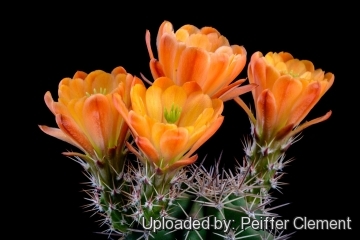
Echinocereus coccineus var. gurneyi Photo by: Peiffer Clement
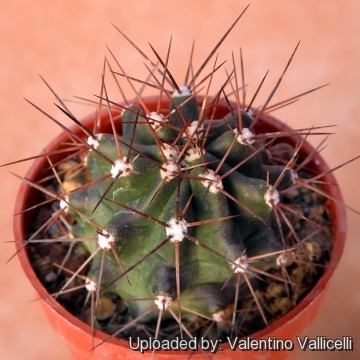
Echinocereus coccineus var. gurneyi Photo by: Valentino Vallicelli
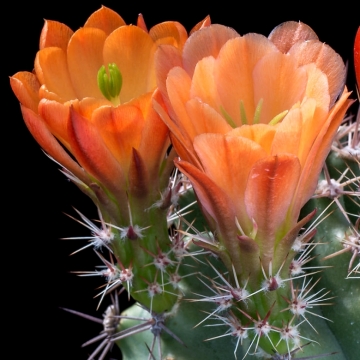
Echinocereus coccineus var. gurneyi HK1064 Brewster County, Texas, USA. Photo by: Peiffer Clement
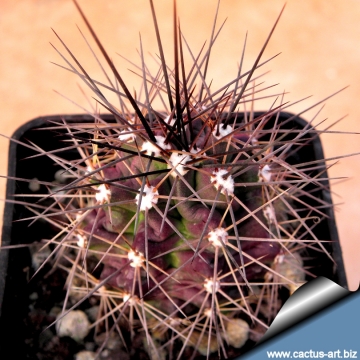
Echinocereus coccineus var. gurneyi Photo by: Cactus Art
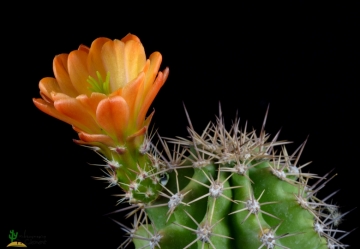
Echinocereus coccineus var. gurneyi HK1064 Brewster County, Texas, USA. Photo by: Peiffer Clement
The gallery now contains thousands of pictures, however it is possible to do even more. We are, of course, seeking photos of species not yet shown in the gallery but not only that, we are also looking for better pictures than those already present. Read More...
Cultivation and Propagation: Echinocereus coccineus var. gurneyiSN|10576]]SN|12620]] is fairly easy to grow. It makes great potted specimens.
Soil: Use a mineral well permeable soil with little organic matter (peat, humus). It grows in limestone areas of Texas (Big Bend area) and adjacent areas of Mexico, so will probably benefit from extra calcium in its soil.
Growth rate: It grows well, though slowly, but it possible to increase the speed of growth to some extent by providing adequate amount of water, warmth, and a liquid fertilizer diluted half strength during the active growing season, but it’s susceptible to rotting if too wet. Most plants will offset readily, and clumps can be produced in a few years.
Soil: It needs a very porous, slightly acidic potting medium (add pumice, vulcanite, and perlite). Outdoors it does well on poor, rocky soils.
Exposure: It likes a sunny position also blasting sun in summer. If grown indoor provide 4 to 6 hours, or more, direct morning or afternoon sun.
Watering: It is sensitive to overwatering (rot prone) needs a very good drainage to avoid rotting, but requires more moisture than true desert cacti to grow and produce flowers.
Hardiness: It its natural environment it is very cold resistant from -10° to -25° C (depending on clones) or less for short periods of time. It can be grown outdoors in Mediterranean warm-temperate climates, But for safe cultivations needs anyway to kept above 5 °C and dry in winter. But it can tolerate temperatures down to -5° C (or even less) for very short periods if very dry and ventilated. During winter month, put them in a cool luminous place and encourage them to enter winter dormancy by withholding water and fertiliser over the winter as they will etiolate, or become thin, due to lower levels of light.
Maintenance: Repot every two years. Needs lots and lots of space to grow, use large shallow container or bowl filled with very porous compost. It like pots with generous drain holes.
Pest & diseases: They are susceptible to fungal diseases if overwatered, but are not nearly as sensitive as many other cacti, especially in warm weather. If kept damp through cold periods, they will invariably suffer.
Garden uses: It is a fine plant for a rock garden or container, contrasts well with agaves, yuccas, and low-growing flowering plants.
Grafting stock: The taller fast-growing forms of Echinocereus coccineusSN|7140]]SN|7140]] and of Echinocereus triglochidiatusSN|12620]]SN|10576]] are highly recommended stocks for grafting cold hardy type cactus species. These can be used as cold hardy type stocks for almost all types of cactus, while still retaining the original natural grown look to the scion.
Edible uses: The fruit can be consumed fresh or preserved.
Propagation: Seeds, also can be grown from cutting as it branches from the base. The seeds may be germinated and grown in containers. Their main requirements consist of high humidity levels, free-draining soil mix, and enough water, light, and nutrition.
| Your Actions | |
|---|---|
| Back to Echinocereus index | |
| Back to Cactaceae index | |
 |
Back to Cacti Encyclopedia index |
Privacy stantement - Terms and conditions - How to cite - About us - Feedback - Donate




